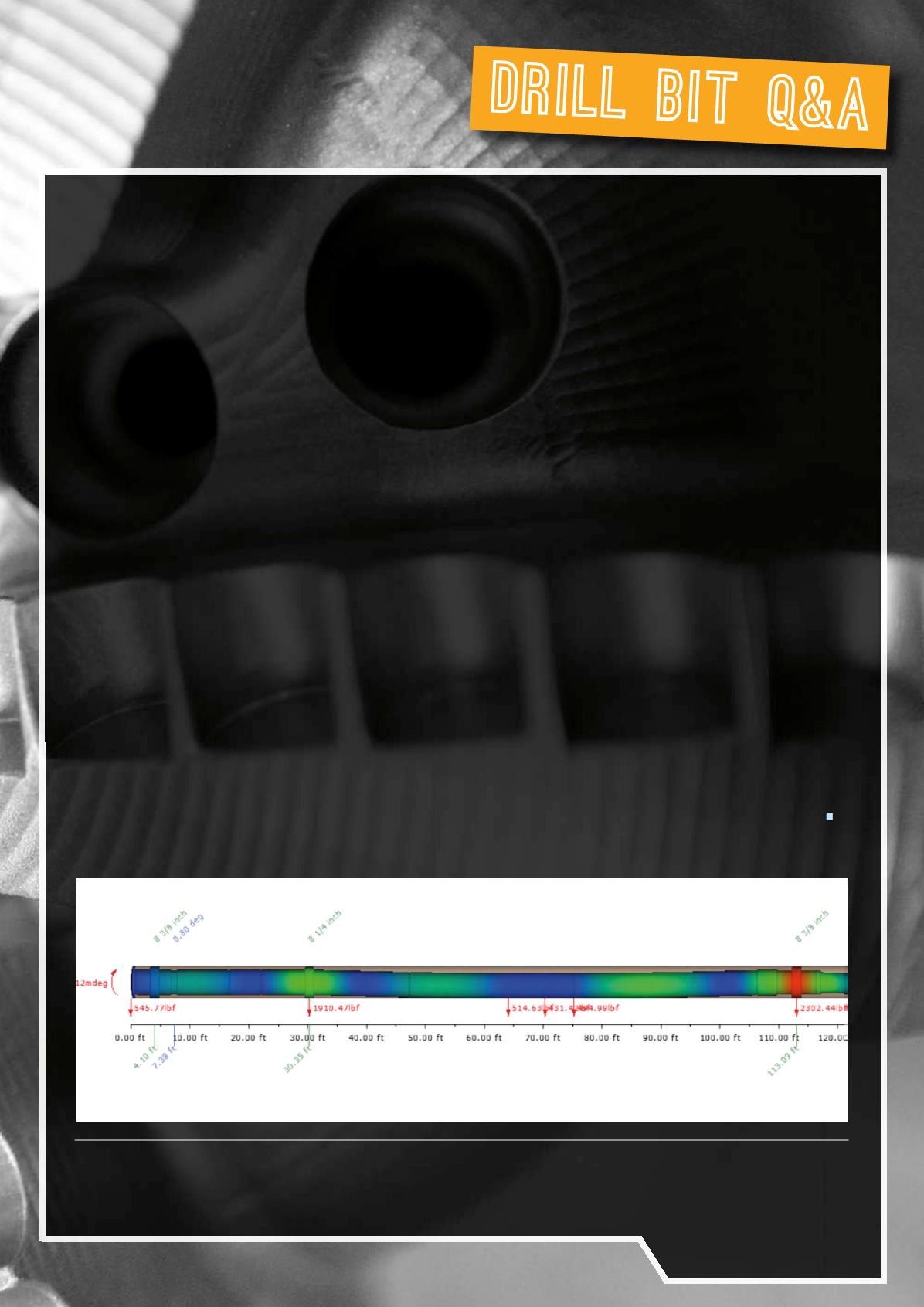
January 2016
Oilfield Technology
|
23
Dri ll Bit Q&A
that the increased power at the bit can be correctly transferred
to the cutting process and avoid cutter breakage and wear, and
ensure that the blades are strong and hydraulically efficient.
Abrasionanderosionresistance
Higher horsepower on the bit is one way to increase ROP. This
is also true for the hydraulic component. In some regions such
as the US, bits are used several times to drill multiple wells.
These run conditions increase abrasion and erosion resistance
requirements. Both can be optimised using improved material
on the bit surface and through hydraulic design.
On the material side, several tests, both in the lab and in
the field have demonstrated tremendous increases in erosion
resistance. A special powder matrix is applied in the mould to
ensure greater resistance. The results in the field have been
impressive.
In addition, multiple CFD tests are now run on each bit
design. Careful performance criteria have been defined
to ensure superior bit cleaning, PDC cooling and erosion
resistance of the bit.
A bit can now drill more than 10 wells during its life, while
providing enhanced performance.
Figure 1 shows a bit that has drilled more than 10 wells
using the optimised hydraulic and new erosion resistance
coating versus the standard process used in the industry.
Advances inPDCtechnology
Bit performance is highly driven by cutter behaviour. 10 years
ago, special treatment on the PDC surface removing the
diamond catalyst, and the cobalt, significantly increased bit
performance. At that time, Tercel recognised the benefit of
this technology and licensed it. Today, things have changed.
Figure 2.
Example fromthe 3DBHAmodel software showing the directional analysis being carried out.
New synthesis technology does not require the post treatment
of the cutter anymore. The catalyst is controlled during the
synthesis itself and multiple processes have emerged. It is of
critical importance to utilise each of these new technologies
in the best application to optimise performance. A triple test
then occurs continuously, which captures wear resistance,
shock resistance and thermal resistance. This is done to
ensure the best cutter is selected for each application. A clear
understanding of the application is critical to this selection.
Offset data is then gathered, recorded and made easily
available in a database system. Cross checking these data with
the results of the multiple tools used increases understanding
of the bit and cutter selection process.
Tacklingdirectional drillingchallenges
Directional drilling is now the most common way wells are
drilled. Directional drilling systems are numerous. There are
more and more rotary steering systems available. Directional
drilling motors are evolving and short bit to bend designs are
becoming increasingly popular in the field. It is essential that
the bit is designed to match the directional system. Several
bit features affect the directional tendency of the bit. The
most recognised is the gauge length, but cutting structure,
shock reducers and bit profile also contribute. Tercel tackles
this aspect of the bit design with laboratory testing, using a
dedicated test bench that allows the driller to simulate point
and push-the-bit system. In addition, a 3D model including
the bit design feature is used to ensure dog leg capabilities,
including a BHA design. The loop is closed by post run
analysis and model updates, which are based on results.
Downhole data from the OptiMASTER helps to increase
knowledge about this critical stage of the drilling process.


